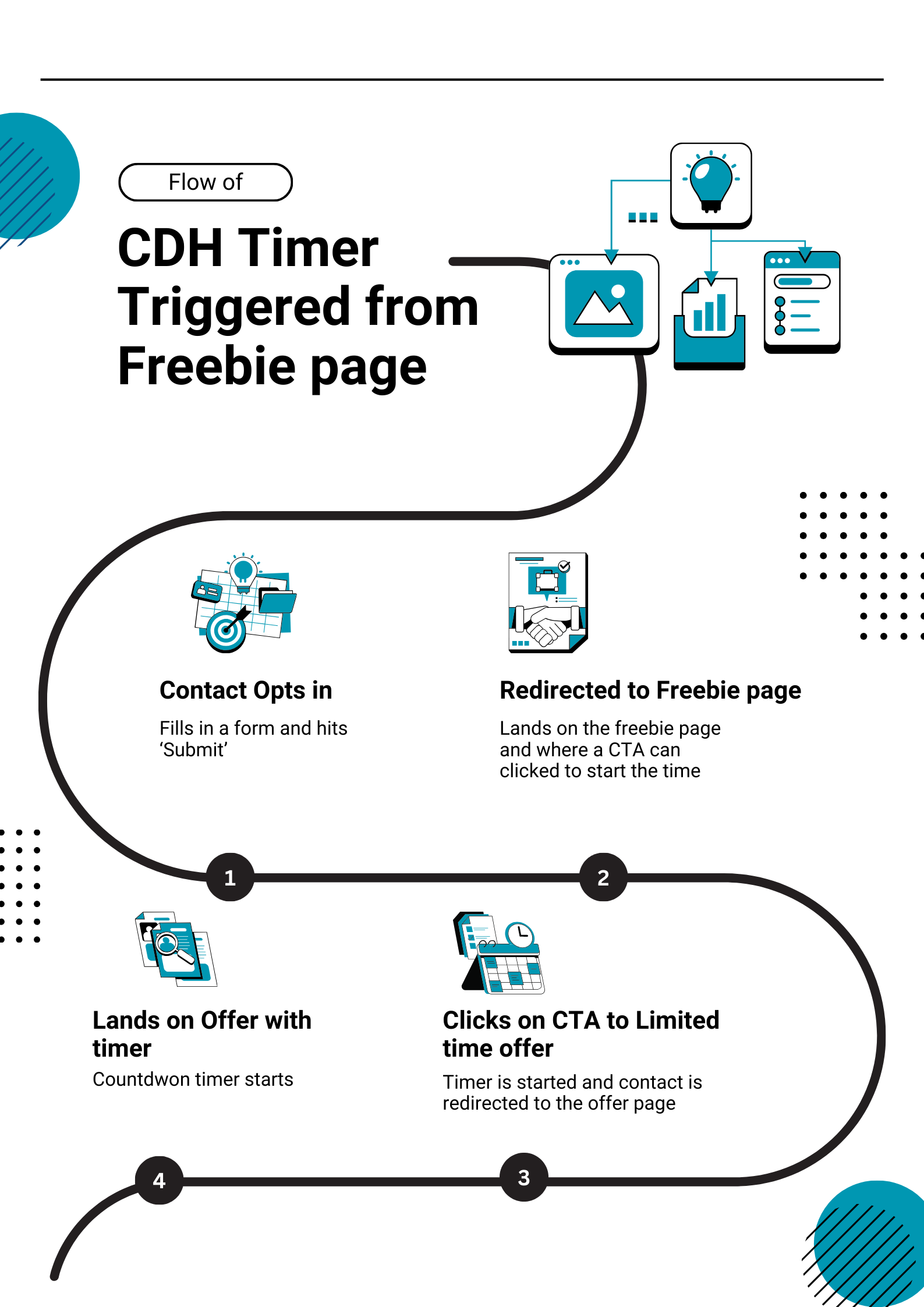This is a game-changer for online business owners and course creators. Instead of applying pressure on everyone who signs up, you’ll trigger urgency only for engaged leads, boosting conversions while avoiding unnecessary friction. By implementing this approach, you make sure that your countdown timer adds value rather than creating unnecessary pressure on your audience.
Why This Approach Works Better
Let’s break it down with a real-world funnel:
A lead signs up for a freebie (Step 1).
They land on a thank-you page (Step 2).
They receive an email containing a link to the freebie page (Step 3).
On the freebie page, there’s a button leading to your main product (Step 4).
The key? You want the countdown to start only after they click the product link (Step 4)—not when they first opt in. This ensures urgency is created only for genuinely interested leads rather than forcing it on everyone. This way, you're guiding the lead into a natural decision-making process rather than pushing them prematurely.
The Problem with Default Countdown Triggers
Most countdown timers start ticking as soon as a lead subscribes. But this approach is flawed:
Putting the timer immediately after opt-in makes it feel pushy. Premature urgency can pressure leads who aren’t ready. If they feel rushed before they’ve even engaged with your content, they might leave altogether.
Not all subscribers are engaged. Some sign up but never check their emails. Triggering the countdown too early wastes its potential impact.
You miss an opportunity to qualify leads when you trigger the timer too early.
If you trigger the countdown later—after the lead has shown genuine interest—you create genuine urgency at the right time - only for serious buyers, those ready to take the next step, rather than casual visitors.
The Challenges (And How to Fix Them)
Setting up a link-click countdown trigger sounds easy, but there are pitfalls to watch for:
Some Optin form platforms (like MailerLite, Everwebinar, systeme.io and some others) strip tracking parameters. This makes it harder for Countdown Hero to recognize clicks, affecting the countdown trigger. In other words, Countdown Hero cannot know who clicked on the link-click CTA to serve them the correct timer if the email address parameter was not passed on from the opt-in form in the first place.
Your webpage builder might remove tracking data. If that happens, Countdown Hero won’t know who clicked, preventing the countdown from starting properly. The email address needs to be present on the webpage where the link-click CTA is placed so that Countdown Hero can capture it when the subscriber clicks. If your webpage builder does not support email address saving functionality, Countdown Hero won’t be able to start the timer.
Freebie pages can be shared publicly. If someone has access to the link for the freebie (often shown to them when after opting in for the freebie), they could share the freebie link with others. This can be problematic if your Countdown Hero timer is only placed on the limited-offer page (the step 4 final page where you want them to make a decision to buy).
Some email platforms don’t allow custom code. If your tool doesn’t support embedded HTML or tracking scripts, you might need a workaround to ensure the countdown functions correctly.
The Best Way to Set It Up
Here’s how to bypass these issues and make it work flawlessly:
Check if your form and webpage builder supports email tracking.
Contact support and ask. Some platforms have a simple setting to enable tracking. Or if you need additional help with making this work Book a FREE 1-on-1 discovery call with us, and we’ll walk you through the next steps to ensure your subscriber form passes the required email address parameter to Countdown Hero for the timer to work.
Use two Countdown Heroes to lock your Freebie pages and also limited time offer pages
Timer #1: Locks the freebie page (but remains hidden). This prevents leads from accessing the offer without triggering the timer first.
Timer #2: Starts when a lead clicks the product link, launching the limited-time offer countdown. This ensures urgency is applied only to those actively moving toward purchasing (Hiding the timer requires a Countdown Hero Pro plan.)
Make sure your email platform allows custom code embedding. Some pricing plans restrict this feature. If needed, upgrade or switch to a platform that supports it. Without this, you might struggle to properly track link clicks and initiate the countdown at the right moment.
So, Ready to Make This Work?
If you’re using Countdown Hero, follow these steps to optimize your funnel and boost conversions without annoying your leads. By implementing this strategy, you’ll ensure that your countdown timers work with your leads’ buying journey instead of against it.
